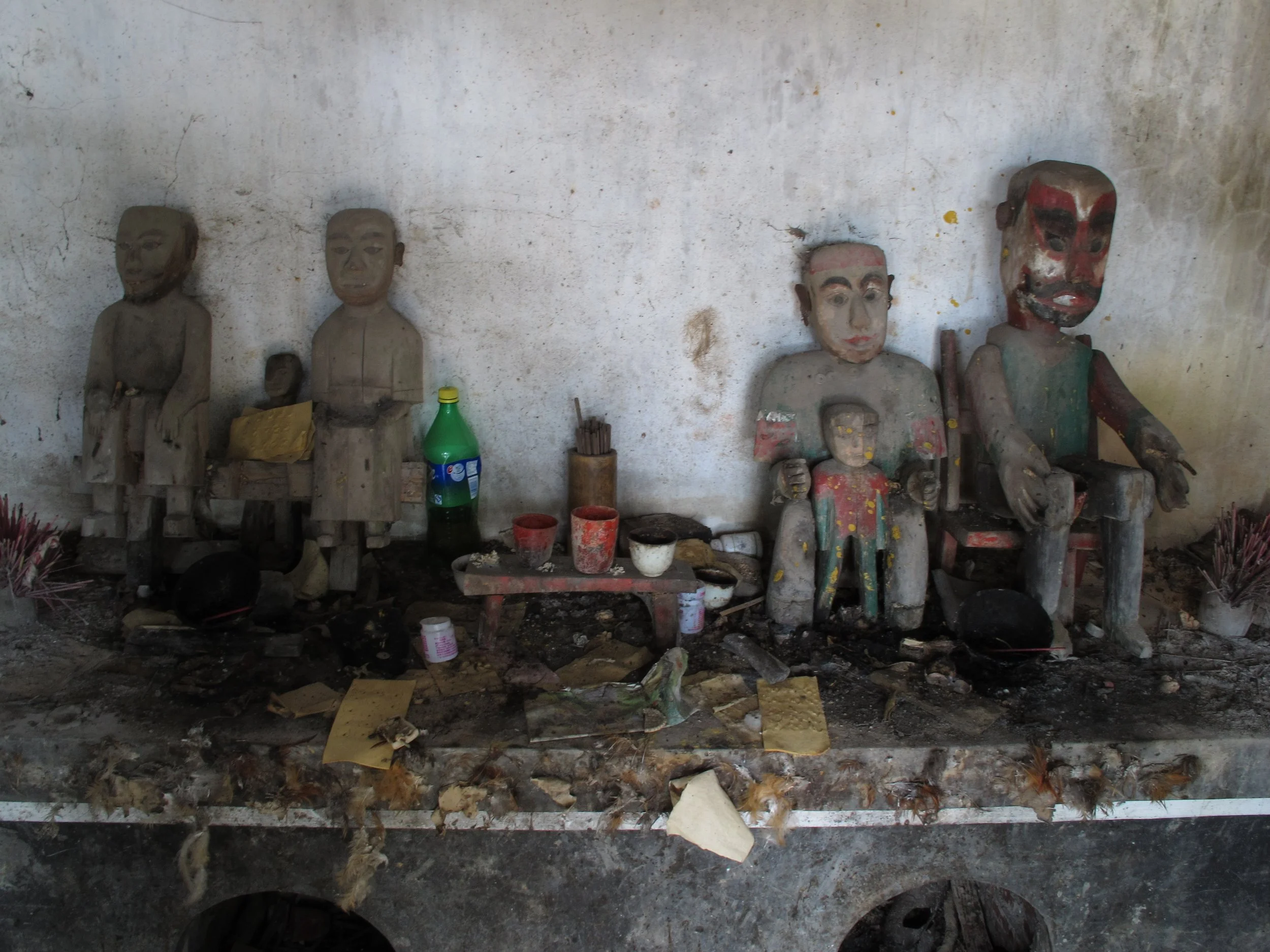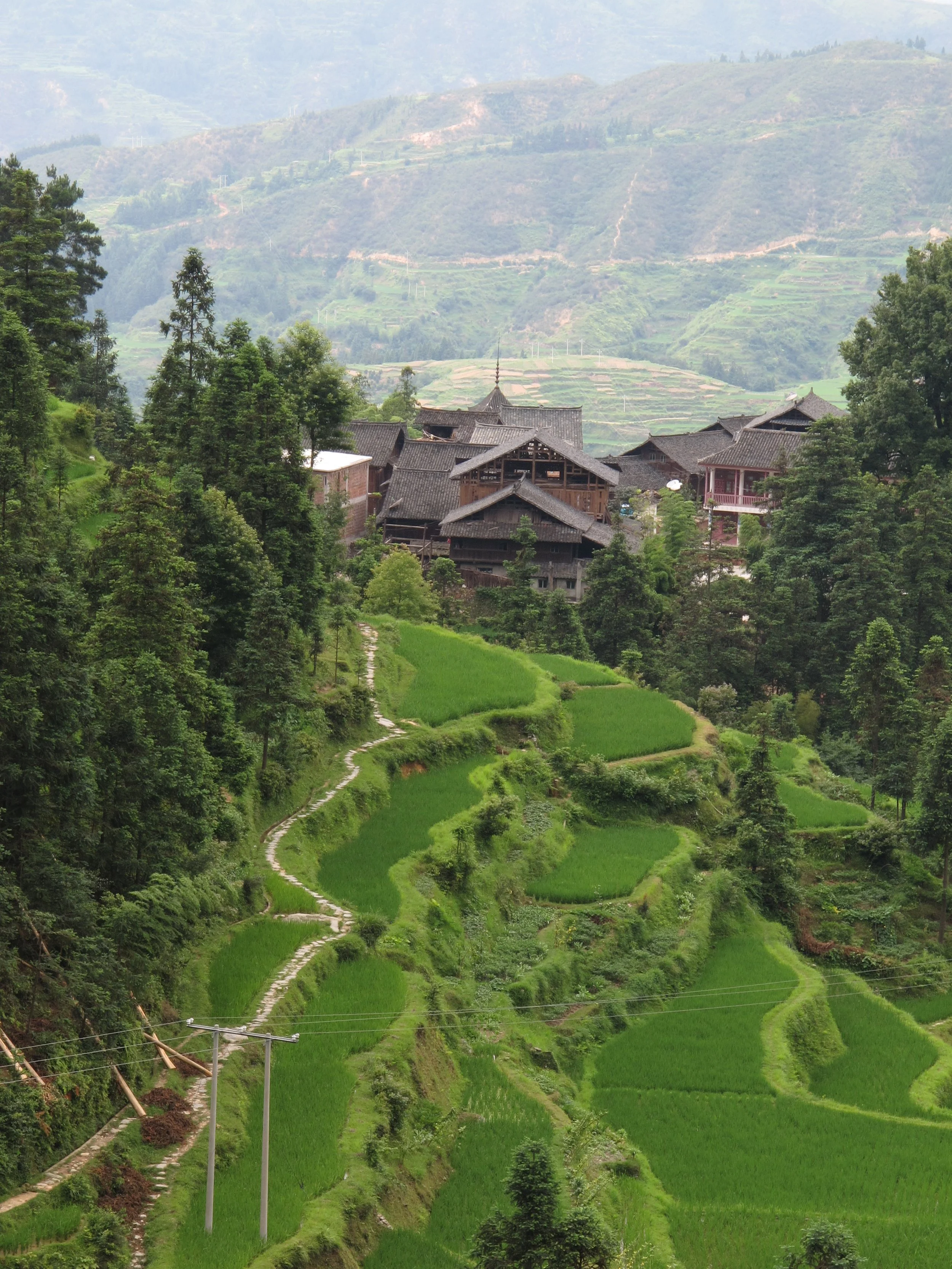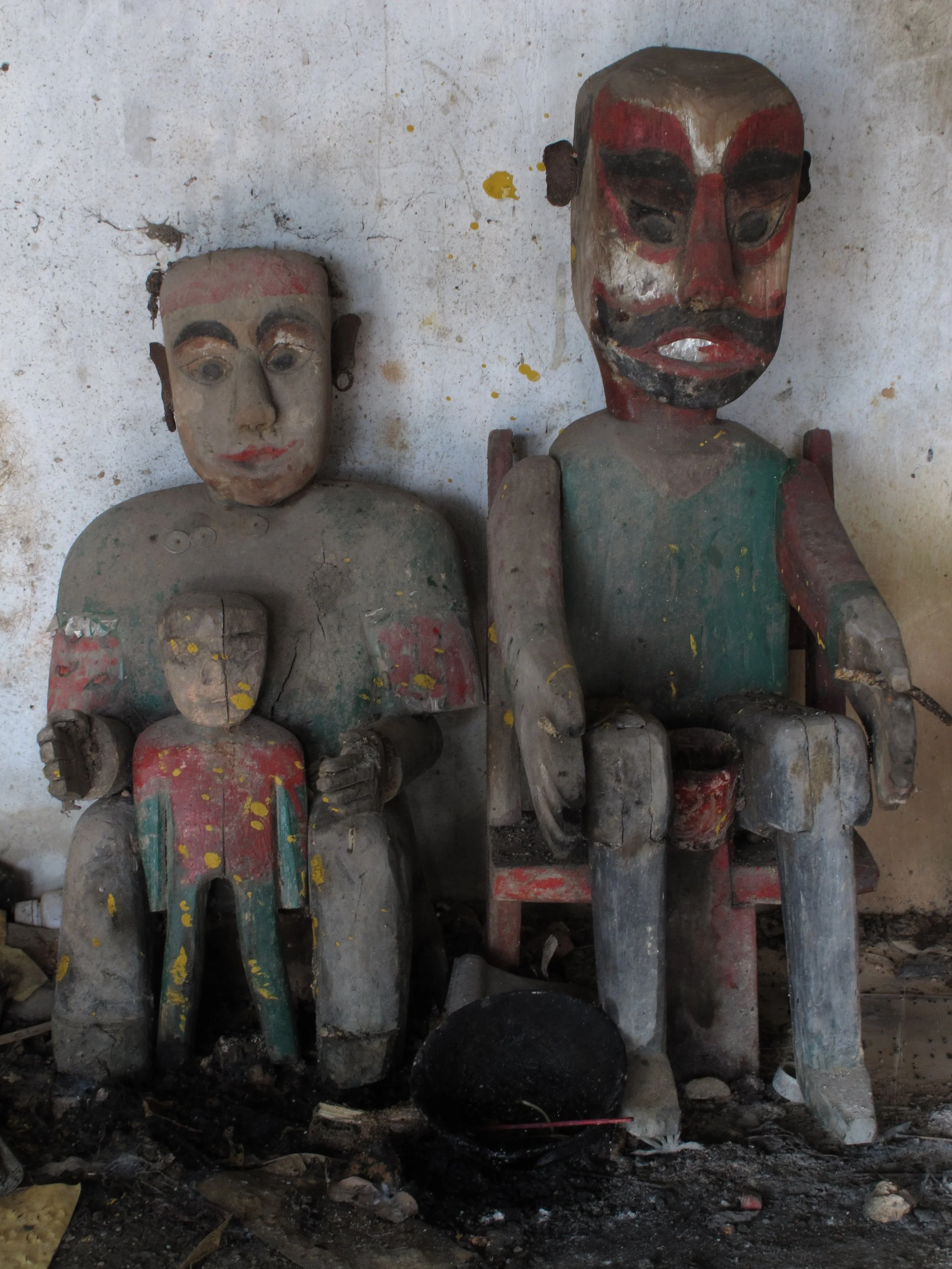Xiage’s yangong deity shrine 肇兴厦格檐公祠
I took the above photo in 2010 at Yangong Ci (檐公祠), a wayside shrine in the Dong hamlet of Xiage, two kilometres uphill from the popular wooden village of Zhaoxing (肇兴). Yangong Ci translates literally as “Lord Eave’s Ancestral Shrine”, but yangong is in fact a Chinese transliteration of the Dong term for something like “home of the venerable grandfather”. The deities here are tudi gong, local protectors of the land whose shrines are often located inside covered wind-and-rain bridges, a feature of Dong settlelments. In remote villages the deity is represented by a figure-shaped rock, picked up from the mountainside or riverbed, but elsewhere they are carved from wood.
Tudi gong are believed to be powerful protectors against misfortune and childlesness, and are especially prayed to by the sick, or by women or couples without children. They can be vindictive if shown disrespect: pointing at the deity can bring disaster to the offender’s entire family, who might suffer strokes and paralysis.
Xiage village was founded during the Yuan dynasty (1271–1368) but the original shrine was destroyed during the Cultural Revolution in 1966, along with Xiage’s old drum towers, wind-and-rain bridges and opera stage. According to village elders, this desecration caused a fire in 1969 which destroyed 300 houses in the area, and the local shaman prophesised further disasters unless the shrine was rebuilt. It was finally restored in December 1996 by ten families of the Lan clan, with 60-year-old Mr. Mangga Langqiao appointed as caretaker.
The new shrine originally housed just the three wooden statues below. A heavily-bearded male tudi, with flaming eyebrows, sits next to his spouse, who wears earrings and a necklace. The child with a red jacket symbolizes happiness and celebration, and the child’s hands and legs are painted green – perhaps becuase the woodcarver felt that yellow skin colour didn’t look beautiful and healthy. The female tudi stretches out her hands towards the child, rather than hugging it – indicating that the child is not hers. She opens her palms in a gesture of giving (to the worshipper praying for a child), one hand in front to protect the child in case it stumbles and falls.
The shrine was initially the private property of the Lan clan, but because supplicants here often got what they wanted, the Luo and Ying clans requested access as well. They arranged for the Luo family carpenter, Mr. Luo Bangsheng, to talk to the caretaker, Mangga Langqiao. After some meals and plenty of rice wine, Mangga Langqiao agreed that the Luo and Ying clans could worship at the shrine too. However, he didn’t have the chance to inform the Lan clan about his decision before the others had already set up their own tudi trinity inside – on the left in the top photo. Although the Lan clan were unhappy with this, it was too late to change anything: once a piece of wood has been carved into a deity, it must not be destroyed, otherwise it will bring disaster. The three new statues look fresher than the older ones, with far less smoke staining; but the local belief is that the older, more weathered statues are more effective.
On 1 January 2016, China abolished its one child policy, allowing all people – the Dong included – to have more than one child without being penalised. But strangely, this also relieved the pressure to pray for children (especially as the modern feeling is that it is not cheap to raise a child, with the expense of education, weddings, and buying them a city apartment). So the child figures were removed, and the female and male deities were shifted, according to the rule of man on the left and woman on the right. Today the shrine’s emphasis is on praying for peace, wealth and good fortune.
Many thanks to Li Maoqing for researching this history


